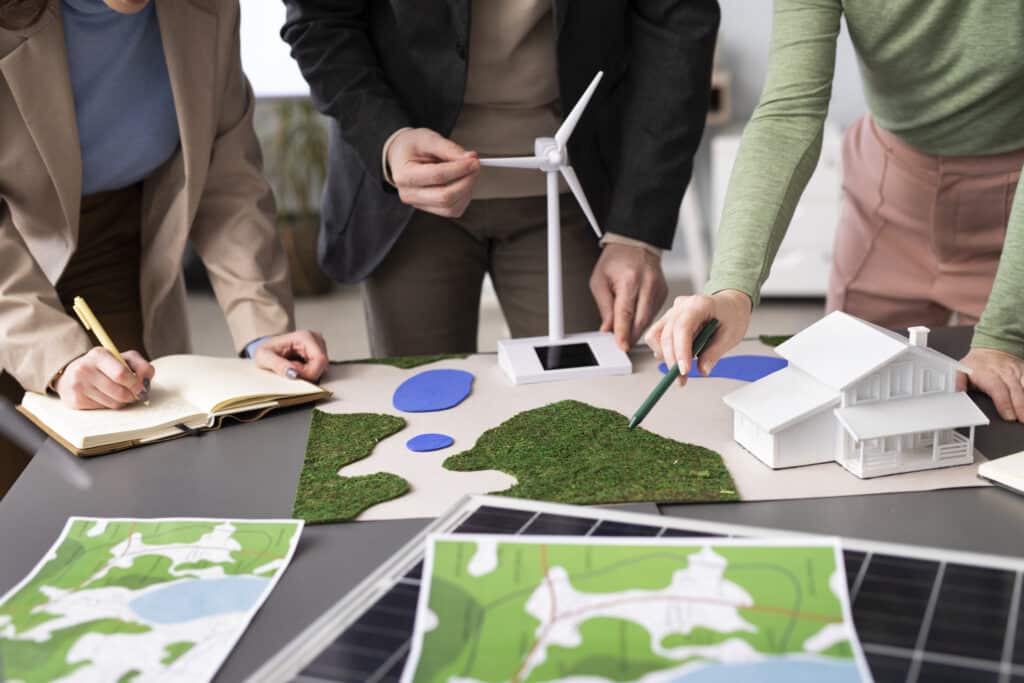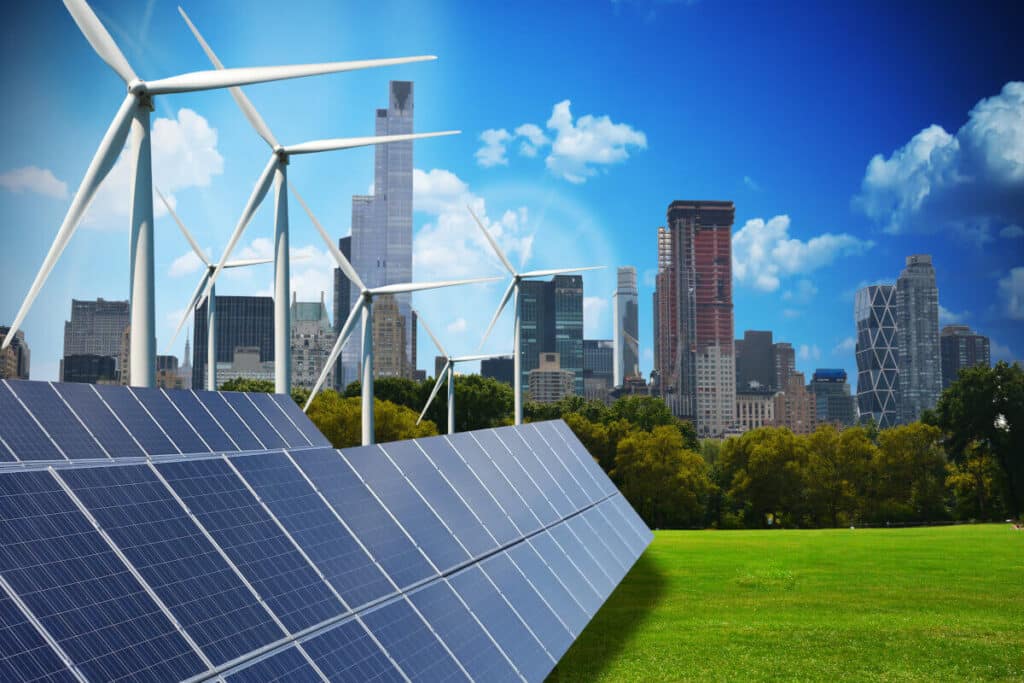In an era defined by innovation and sustainable development, the energy sector stands at the forefront of transformation. The global pursuit of cleaner, more efficient energy solutions has spurred advancements that rely heavily on data-driven insights and cutting-edge technologies. At the heart of this transformative movement lies the SYNERGY H2020 project, a venture aimed at revolutionizing the energy landscape through the convergence of Big Data and Artificial Intelligence.
The SYNERGY project, funded by the EU, is a visionary endeavour that seeks to construct a monumental Big Energy Data Platform and AI Analytics Marketplace. This ground-breaking platform is designed to establish a reference Big Data ecosystem, aggregating information from a myriad of energy-related sources, including IoT statistics, sensor data, and energy market data. Furthermore, it aims to empower and enhance the capabilities of Artificial Intelligence, weaving its intelligence into the very fabric of our energy systems. With a vision as vast as its potential impact, SYNERGY is poised to reshape the future of energy.
One of the project’s most exciting aspects is its commitment to real-world applicability. To this end, the SYNERGY project introduced an Open Call, which primarily focused on selecting forward-thinking experiments and services to be rigorously tested and validated in live, real-world conditions. These experiments would harness real data provided by the project’s esteemed demo partners, thereby broadening the scope and enriching the service portfolio to be ultimately delivered by the project’s technology partners to the energy market actors and stakeholders. These services are being meticulously crafted in harmony with the SYNERGY platform, ultimately accelerating their applicability and extending their reach.
In this article, we delve into the story of one of the Open Call’s winners, Maps SpA. As they recount their Open Call journey, they provide a detailed glimpse into their project’s innovative nature and the profound impact it promises to have on the energy sector.

Can you start by giving us an overview of the app developed for the SYNERGY Open Call? What sets your app apart from other proposals in the Open Call, and what unique benefits does it bring to the energy sector?
“A Renewable Energy Community (REC) aggregates consumers, producers from renewable sources, and prosumers of electrical energy. RECs aim to minimise their energy bills by increasing energy self-consumption, using efficiently their energy storage assets, and exploiting best market conditions or remunerations due to regulatory incentives. EU Directive 2018/2001, known as RED II, grants various incentives that each EU member state is expected to implement. Additionally, RECs also have a role in improving the stability of the grid, thus addressing the needs of Distribution System Operators (DSO) of minimising unbalances of energy flows in the grid. For these reasons, RECs have an increasing need of intelligent management systems that leverage technical, market, and regulatory information to optimise the REC’s usage of its assets.
Within the above summarised context, and thanks to SYNERGY project support and the tools of the SYNERGY platform, BRAIN has addressed the specific need of practically demonstrating that storages can be key assets of RECs. We have developed optimal storage planning algorithms, which consider both the incentive on energy sharing and the valorisation of energy injected with the goal of maximizing the economic performance of the community.
Even if compared with state-of-art publications, BRAIN is better at solving the RECs energy cost minimization where the (virtual) self-consumed energy between Community members is an additional variable to be considered.
The SYNERGY data and platform tools have been employed to construct and train machine learning models for predicting electricity prices, PV production, and consumption. These predictions serve as essential components for validating BRAIN optimization algorithms.
The results obtained highlight that by using BRAIN there can be an increase of more than 45% in energy sharing and of approximately 10% of the energy valorisation revenue as well as, thanks to local energy sharing, a corresponding reduction in CO2 emissions due to minor network losses.”
What motivated you to participate in the SYNERGY Open Call, and how do you believe your service contributed to the overall objectives of the project?
“The main motivation resided in the interesting combination of data and analytics that SYNERGY was developing, promoting, and making available to the open-call projects.
These are the main indicators (in terms of total number) of resources accessed or delivered within the platform with the BRAIN project:
- Datasets acquired through the SYNERGY Marketplace: 21
- Models trained: 14
- Analytic pipelines created: 64
- Queries used to retrieve the data for the app: 82
We reckon that BRAIN contributes to the objectives of the SYNERGY project by demonstrating the usefulness of the SYNERGY platform for the development of new intelligent services.”

How the activities in SYNERGY Open Call allows you to innovate in your business?
“We set to ourselves the task of solving the problem of maximising the benefits of a REC that is rewarded for the energy shared by the REC members and for the energy produced and sold to the market.
To our knowledge there currently is no similar solution that explicitly includes in its objectives the implementation of RED II directive for RECs.
We then plan to bring to the market a solution, currently missing, for the optimal management of RECs aligned with the current regulations.
In particular the current implementation is based on Italian implementation of RED II directive, but we are not limited to the Italian market as the solution is designed and implemented with configurability as a central element.
This ensures adaptability to changing rules and, more important, enable a short time-to-market for the implementation of nation-specific RECs management solutions.”
Which category or group of stakeholders can benefit from your SYNERGY App?
“The outcome of BRAIN optimisations generates mainly benefits for REC members. Operationally the users of BRAIN are REC representatives, that are nominated managers of RECs or the REC members themselves in case of RECs that do not make use of management services.”
How do you plan to leverage the services developed in SYNERGY in your daily business?
“In the coming years, small and medium-sized storage is expected to increasingly penetrate the electric market, particularly in distributed self-consumption configurations such as RECs. However, this penetration is only possible if these storage facilities are managed by intelligent solutions such as those developed in the BRAIN project. These assets could shift peaks of produced energy to times of day when energy is most needed by community members.
Our plan is to first integrate BRAIN algorithms within Maps Group’s ROSE software solution for intelligent management of Energy Communities. These algorithms will then be validated in live contexts, starting from the Italian market and later in other European countries.
Furthermore, these algorithms will be evolved to support and optimize other flexible energy assets, such as electric charging infrastructure in the Vehicle to Grid framework, and thermal energy production systems such as electric, geothermal, heat pumps or HVAC exploiting the thermal inertia of buildings.
All market scenarios will be evaluated to extend the algorithms with the aim of addressing the local flexibility scenarios being implemented in several European countries in accordance with the IEM directive (EU/2019/944) e and the electricity market reform being discussed by the European Commission.”

The SYNERGY project aims to develop a Big Energy Data Platform and AI Analytics Marketplace. How do you think this platform will revolutionize the energy sector, and what role does your developed app play in this transformation?
“SYNERGY vision is very appealing. The availability at large of trustworthy, complete, and clean energy data is crucial for the scaling of the development of innovative data-driven services in this sector. In our understanding SYNERGY demonstrates the feasibility for the existence of such energy data and analytics marketplaces. In this context, we see BRAIN as the demonstration of the usefulness of data and analytics market platforms such as SYNERGY.”
Conclusion
In the ever-evolving energy sector, SYNERGY’s Big Energy Data Platform and AI Analytics Marketplace, exemplified by Maps SpA’s innovative app BRAIN, represent a paradigm shift. BRAIN’s unique approach to managing Renewable Energy Communities (RECs), optimizing energy usage and maximizing economic benefits, mirrors SYNERGY’s mission to revolutionize the industry through data and analytics. Beyond its immediate application, BRAIN’s algorithms hold promise for the broader energy landscape, reinforcing sustainability goals. Together, SYNERGY and ground-breaking solutions like BRAIN illuminate a path towards a more efficient and sustainable energy future.